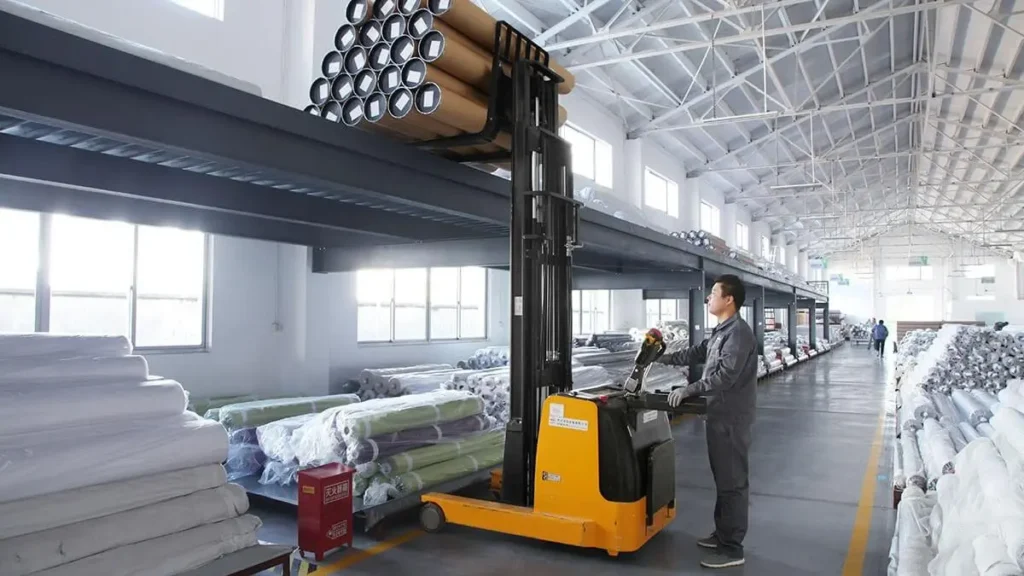Understanding the cost of automated blinds is very important for big projects. Many things affect the price, such as the motor, how it connects to other systems, the fabric, and how hard it is to put in.
The cost of automated blinds for projects is shaped by motor type, control integration, fabric choice, size, and installation. While initial investment may be higher, the long-term ROI is strong through energy savings, better security, comfort, and operational efficiency.
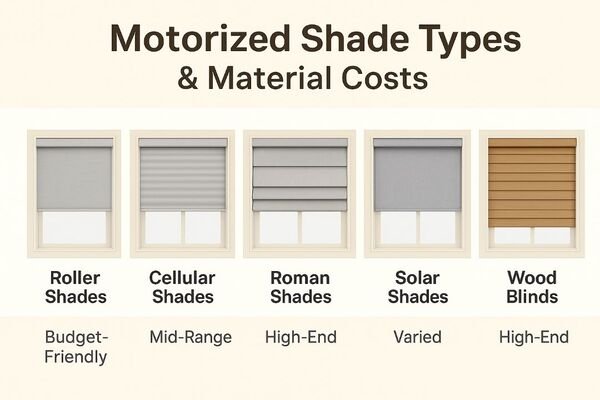
I know that managing project expectations, especially regarding costs, is key to my success. Automated blinds are a popular request, but their pricing can be complex. I always make sure my clients understand all the factors involved. This guide helps me explain everything clearly.
What are the core components influencing automated blind pricing?
Are you unsure what exactly drives the cost of automated blinds? Many pieces contribute to the final price, not just the blind itself.
The core components influencing automated blind pricing include the motor technology (wired vs. battery, power, noise level), the control system (remote, wall switch, app, smart home integration), fabric material and performance, the size and type of blind, and installation complexity.
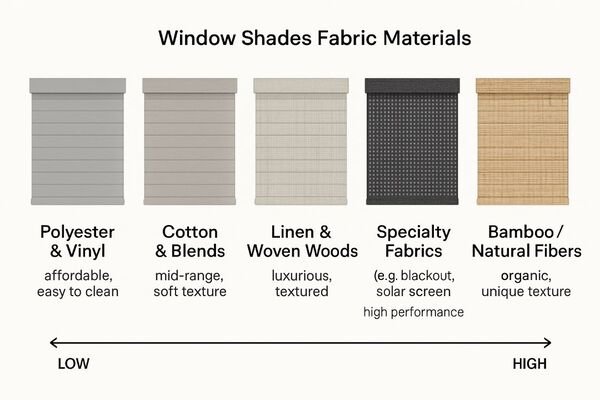
From my experience, several core components heavily influence the pricing of automated blinds. First, the motor technology is crucial. A basic battery-powered motor will have a lower unit cost and easier installation than a powerful, hardwired motor designed for very large blinds. Factors like motor noise level also play a role; ultra-quiet motors usually come at a premium. Shadesmart offers a range of motor options to suit different project needs and budgets. Second, the control system significantly impacts the price. A simple handheld remote is the most basic. Adding wall switches, integration with a building management system (BMS), or seamless connectivity to popular smart home platforms like Amazon Alexa, Google Home, or Apple HomeKit will increase the cost. The more advanced and integrated the control, the higher the price. Third, the fabric material makes a big difference. Standard polyester fabrics are generally more affordable, but specialized materials like sun-filtering screens, blackout fabrics, fire-rated options, or sustainable textiles will increase the cost due to their enhanced properties and manufacturing complexity. Fourth, the size and type of blind directly affect material usage and motor strength requirements; larger and heavier blinds typically cost more. Finally, the complexity of installation, especially for hardwired systems or custom architectural integrations, adds to the labor costs.
| Core Component | Description | Price Impact (General) |
|---|---|---|
| Motor Technology | Type (wired/battery), power (for size/weight), noise level (standard/quiet). | Higher for powerful, quiet, or complex wired systems; lower for basic battery. |
| Control System | Remote, wall switch, mobile app, smart home integration (Alexa, Google, BMS). | Increases with the sophistication and breadth of integration. |
| Fabric Material/Performance | Standard, sun-filtering, blackout, fire-rated, sustainable, insulated. | Varies significantly based on material properties and features. |
| Blind Size & Type | Dimensions (width/height), specific blind style (roller, cellular, Venetian). | Directly proportional to size; certain blind types are inherently more complex. |
| Installation Complexity | Standard vs. custom mounts, electrical wiring, difficult access. | Adds to labor costs, especially for specialized installations. |
| Brand & Warranty | Reputable brands often have higher costs but offer better reliability and support. | Premium for established quality, comprehensive warranty. |
How do various automation systems affect project budgets?
Are you trying to figure out how different ways to automate blinds will impact your project's money plan? The choice of system is a big factor.
Various automation systems affect project budgets based on their complexity: basic remote control is cheapest, multi-channel remotes and wall switches add moderate cost, while smart home integration (Z-Wave, Wi-Fi, proprietary systems) significantly increases cost but offers advanced features and energy savings.
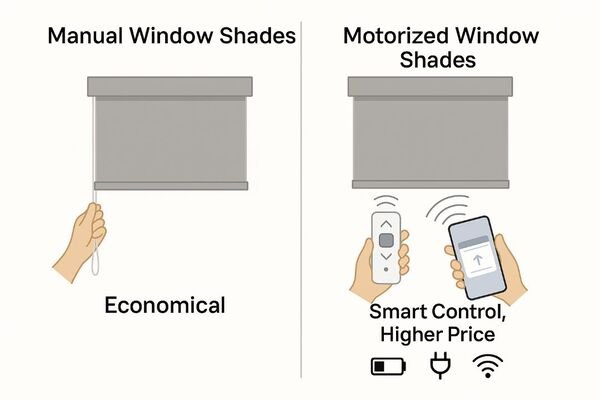
I have learned that the choice of automation system has a direct and significant impact on the project budget. I consider a few tiers of technology. First, basic remote control systems are the most budget-friendly. Each blind might have its own remote, or a single remote controls a small group. This is good for simple setups but lacks centralized control. Second, multi-channel remotes and wall switches offer more convenience. A single remote can control multiple blinds or groups of blinds. Wall switches provide a fixed control point. These systems add a moderate cost due to more complex wiring for wall switches or more advanced remote technology. Third, smart home integration systems represent a higher investment but unlock powerful capabilities. These include Z-Wave, Zigbee, Wi-Fi-based systems, or proprietary platforms like those Shadesmart integrates with. They allow control via mobile apps, voice commands (through Alexa, Google Assistant), and integration with other smart devices. This means higher costs for hubs, gateways, and professional programming. Fourth, integration with Building Management Systems (BMS) is the most complex and expensive. This is typical for large commercial buildings, where blinds need to communicate with HVAC, lighting, and security systems. This requires advanced hardware, specialized software, and expert integration services. While more costly upfront, these advanced systems offer significant long-term energy savings and operational efficiencies.
| Automation System | Description | Budget Impact |
|---|---|---|
| Basic Remote Control | Simple handheld remote, often one-to-one or small group control. | Lowest cost; minimal installation complexity. |
| Multi-Channel Remotes/Wall Switches | Control multiple blinds/groups; wall switches require some wiring. | Moderate cost increase; offers more flexible control options. |
| Smart Home Integration | Connects to platforms like Alexa, Google Home, Apple HomeKit, Z-Wave, Wi-Fi. | Significant cost increase; requires hubs/gateways, professional setup. |
| Building Management System (BMS) Integration | Full integration with building-wide systems for centralized control and automation. | Highest cost; requires specialized hardware, software, and highly skilled integrators. |
| Sensors & Timers | Light sensors, temperature sensors, programmable schedules. | Adds cost to any system; enhances automation and energy efficiency. |
| Proprietary Systems | Manufacturer-specific systems offering unique features. | Cost varies; often high for advanced features and tight integration. |
What is the lifecycle cost and ROI of automated blinds?
Are you thinking about the overall cost of automated blinds, not just the first price, and what benefits you get back? It is a long-term investment.
The lifecycle cost of automated blinds includes initial purchase and installation, energy consumption, and maintenance. The ROI is strong due to significant energy savings, increased property value, enhanced security, improved occupant comfort, and operational efficiency over their lifespan.
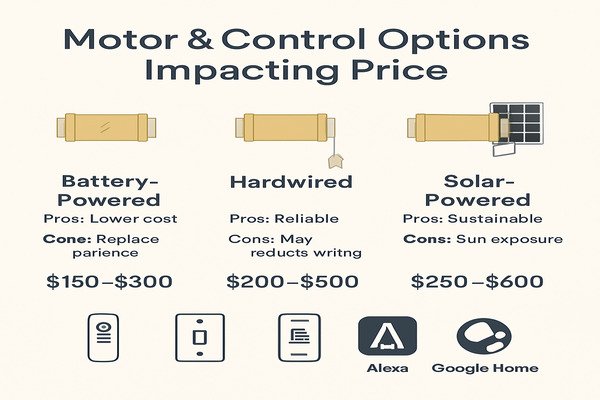
I know that making smart investments for my clients means looking at the full lifecycle cost and the return on investment (ROI). Automated blinds have a compelling case. The lifecycle cost includes the initial purchase, installation (which can be higher for wired or integrated systems), and minor ongoing energy consumption (typically very low for motors). Maintenance costs are generally minimal for quality blinds, primarily battery replacements for wireless units, or occasional repairs. However, the ROI for automated blinds is substantial. First, energy savings are a critical factor. Automated blinds can be programmed to respond to sunlight, temperature, or time of day, optimizing natural light and minimizing heat gain/loss. This directly translates into lower HVAC costs, which is a significant long-term saving for any building. Second, increased property value is clear. Automated blinds are a premium amenity that enhances the appeal and perceived value of residential and commercial properties. Third, enhanced security is a benefit; programmed movement can simulate occupancy, deterring intruders. Fourth, improved occupant comfort and productivity are invaluable. Precise light control reduces glare, and ease of adjustment creates a more pleasant environment, leading to higher satisfaction and potentially better work output. Finally, operational efficiency, especially in large buildings, comes from centralized control and fewer manual adjustments, saving labor costs. Shadesmart’s durable, high-performance systems maximize this long-term value.
| Lifecycle Cost Component | Description | ROI Benefit |
|---|---|---|
| Initial Investment | Purchase price of blinds, motors, controls, and installation labor. | Enables all subsequent ROI benefits. |
| Energy Consumption | Electricity usage of motors (very low for most) and control systems. | Minimal long-term cost, often offset by energy savings. |
| Maintenance | Battery replacement (for wireless), occasional repairs. | Typically low for quality products, reducing operational expenses. |
| ROI: Energy Savings | Automated optimization of light/insulation reduces HVAC costs. | Significant reduction in utility bills over lifespan. |
| ROI: Property Value | Modern amenity, aesthetic appeal, smart home integration. | Increased resale value or rental income potential. |
| ROI: Security | Automated movement simulates occupancy when premises are empty. | Deterrent to theft, enhanced peace of mind. |
| ROI: Comfort/Productivity | Optimized lighting and thermal comfort for occupants. | Higher tenant satisfaction, improved work performance. |
| ROI: Operational Efficiency | Centralized control, reduced manual adjustments, integration with BMS. | Lower labor costs for facility management. |
How can B2B clients secure accurate, competitive quotes?
Are you tired of getting quotes that do not match your project's real needs or budget? Getting accurate prices is key to successful planning.
B2B clients can secure accurate, competitive quotes by providing detailed project specifications, requesting a breakdown of all costs, exploring bulk discounts, obtaining multiple bids from reputable suppliers like Shadesmart, and clarifying warranty and service agreements upfront.

I know that securing accurate and competitive quotes is vital for budget control and project success. I have a systematic approach for my B2B clients. First, providing incredibly detailed project specifications is paramount. This includes precise measurements for each window, desired fabric types (e.g., blackout, sheer, solar, fire-rated), specific motor requirements (battery, low-voltage, high-voltage, quiet), and the exact control integration needed (remote, app, specific smart home platform, BMS). Ambiguity leads to inaccurate quotes. Second, I always request a comprehensive breakdown of all costs. This means itemizing blinds, motors, controls, wiring, accessories, shipping, installation labor, and any programming fees. Shadesmart provides transparent pricing, which helps me understand where every dollar goes. Third, I proactively inquire about bulk discounts and tiered pricing for larger quantities. Most suppliers offer better rates for volume orders, and understanding these thresholds can help optimize the overall budget. Fourth, obtaining multiple bids from several reputable suppliers is good practice. This allows for comparison, helps negotiate, and ensures the pricing is competitive for the market. However, I prioritize established partners like Shadesmart for consistency and reliability. Finally, clarifying warranty terms, service agreements, and support structures upfront is crucial. Hidden costs or poor after-sales support can negate any initial savings. A clear understanding of these aspects ensures there are no surprises down the line.
| Strategy | Description | Benefit for B2B Clients |
|---|---|---|
| Detailed Project Specs | Provide precise measurements, fabric needs, motor type, control, integration. | Ensures accurate quotes tailored to exact project needs. |
| Comprehensive Cost Breakdown | Request itemized pricing for all components and services. | Promotes transparency, helps identify cost drivers. |
| Inquire About Bulk Discounts | Proactively ask for volume-based pricing or tiered discounts. | Optimizes costs for large-scale projects. |
| Multiple Reputable Bids | Obtain quotes from several trusted suppliers (e.g., Shadesmart). | Facilitates competitive comparison and negotiation. |
| Clarify Warranty/Service | Understand warranty coverage, service agreements, and support structures. | Prevents hidden long-term costs and ensures reliable operation. |
| Engage Early | Involve suppliers early in the design and planning phase. | Allows for value engineering, identifies potential cost savings. |
Conclusion
The cost of automated blinds is influenced by motor type, control systems, and fabric choices. These factors impact project budgets, but the long-term ROI is strong due to energy savings and increased property value. B2B clients should provide detailed specifications and request transparent quotes from reliable partners like Shadesmart for accuracy.
